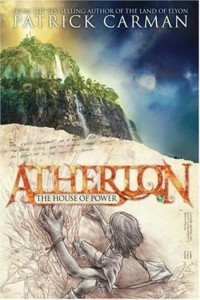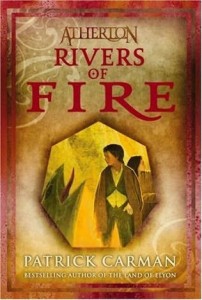 The only world eleven-year-old Edgar has ever known is that of Tabletop. In the center of Tabletop are the cliffs that lead to the Highlands, but climbing those cliffs is strictly forbidden. At the outer edge, sheer cliffs descend to the unknown Flatlands. As an orphan, Edgar has always had to work for Mr. Ratikan, the cruel manager of the fig orchard, who can barely contain his disdain for him.
The only world eleven-year-old Edgar has ever known is that of Tabletop. In the center of Tabletop are the cliffs that lead to the Highlands, but climbing those cliffs is strictly forbidden. At the outer edge, sheer cliffs descend to the unknown Flatlands. As an orphan, Edgar has always had to work for Mr. Ratikan, the cruel manager of the fig orchard, who can barely contain his disdain for him.
But Edgar has a secret. His curiosity is not to be contained by the Orchard, or even by Tabletop. He has learned how to climb the cliffs to Tabletop. Soon he discovers other secrets, such as why Tabletop is undergoing a series of increasingly strong earthquakes, and exactly who lives in the Highlands, and how they control the source of water. Will he solve these mysteries in time to save his world, and the lives of his new friends Samuel and Isabel?
After I posted the book list that Austin and Davis gave me, I headed to the library. I was really in the mood for some new books, something unlike anything I had been reading lately. In fact, talking to Austin and Davis made me want to read something that I would have loved reading when I was in seventh grade, when reading was still a “want to” or “get to” rather than a “have to.” So when I saw this book on the shelf, I grabbed it.
I read this book in two days in my spare time (something I don’t have a lot of) and sent a message to Austin that this was one of the best books I had read in a long time. It’s a quick read, with plenty of action and suspense. I highly recommend it.
 There are actually three books in this series: The House of Power, Rivers of Fire, and The Dark Planet. Unfortunately, my local library only has the first two in the series, and I was bummed that I wouldn’t be able to follow the entire story arc. However, the story that starts in The House of Power is finished by the end of Rivers of Fire. The Dark Planet actually tells a story that happens after all the action in the first two is well over. So if you can’t get the third one, you won’t be left hanging.
There are actually three books in this series: The House of Power, Rivers of Fire, and The Dark Planet. Unfortunately, my local library only has the first two in the series, and I was bummed that I wouldn’t be able to follow the entire story arc. However, the story that starts in The House of Power is finished by the end of Rivers of Fire. The Dark Planet actually tells a story that happens after all the action in the first two is well over. So if you can’t get the third one, you won’t be left hanging.
Of course, I still want to read The Dark Planet.
Response
Warning: The rest of this post contains spoilers!
Because this story starts off with an eleven-year-old hero, I was afraid it might be another one of those Harry Potter clones that are still with us. But it’s not. Edgar and Harry are both eleven, both orphans, and both boys. While they eventually travel to some unknown place (Edgar to the Highlands and Harry to Hogwarts), make friends they’ve never had before, and both discover powers they never knew they had (in Harry’s case magic, and in Edgar’s case a remarkable climbing ability). While that seems to cover a lot of territory, it barely scratches the surface, these tropes are found in a lot of kid lit and YA lit. What keeps them from descending into cliché in the Atherton series, and what prevents these books from becoming just another HP clone is the richness of detail Carman uses to create his world. Atherton is a world which can stand on its own. Without Harry Potter, there would be no Harry Potter clones, but without Harry Potter, Atherton would still be very much with us. Like Hogwarts, it is a vivid world.
What I found particularly satisfying about this book is that Atherton is a created world, with three tiers: the Highlands, Tabletop, and the Flatlands. Those with power live in the Highlands, and in addition to controlling the flow of water from the Highlands to Tabletop (where it is always in short supply), they periodically send baskets down the cliffs for the people of Tabletop to fill with figs, rabbits, and mutton—their only agricultural products. In fact, the people of the Highlands lead a very bourgeois existence, while those of Tabletop could only be described as peasants.
It is rare that Marxist literary criticism is taught in the middle school or even high school classroom, but these two books do present an almost textbook example of power relationships in literature that can be studied from a Marxist literary perspective, from the form of government to the the way characters interact or how they spend their free time (the latter of which is a real surprise for Edgar when he gets to the Highlands). Even the three-tiered structure of Atherton itself is symbolic of the social structures described by Marxism. Depending on where you teach, you may or may not be able to use the word Marxist in the classroom, but you can certainly talk about the economic relationships depicted in the book and how they affect the characters’ lives.
Carman, Patrick. The House of Power. New York: Little Brown, 2007.
—. Rivers of Fire. New York: Little Brown, 2008.
https://bookblog.kjodle.net/2011/05/23/atherton-the-house-of-power-patrick-carman/
